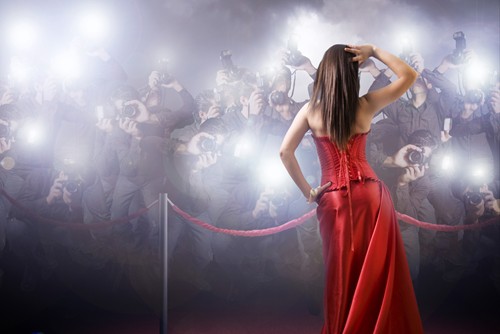
The Power of Red
The colors in your custom made signs can all send a powerful message about your brand. One particular striking hue is red.
In the United States, it's everywhere: stop signs, sodas, sports logos like that of the Chicago Bulls and of course the American Flag. What does it mean, and should you be using it in your own ad campaign? The answer will depend on your brand identity.
A Red Dress: Timeless and Provocative
Some stereotypical connotations that many have with the color red are love, sensuality and danger. According to the results of a study published in the European Journal of Social Psychology, heterosexual and bisexual men tended to ascribe a higher intimacy level to images of women wearing red clothing than those wearing green or blue, colors that could be perceived as being more subdued.
Naturally, these qualities have been used in advertising when it comes to red. In an AdWeek piece on the ways that women in red dresses have been incorporated into promotions for all sorts of products over the decades, Jenny Darroch, a professor from Claremont Graduate University, remarked upon how enduring this one particular use has been.
"The meaning of the red dress has remained constant—so the question comes down to how it's executed," she said.
This doesn't mean that the dress has to be the only red thing in an ad that uses this image. A Loews ad analyzed in this article places a model wearing this color in a room with curtains that are of a similar shade, perhaps to reinforce the idea.
A Powerful Combination
Aside from this usage, red also can be riveting when paired with other commonly seen shades. In a Rolling Stone interview from 2005, rock star Jack White memorably called the marriage of red, white and black as "the most powerful color combination of all time," and one with resonance all over the world.
To prove this, these three colors were the calling card of his band The White Stripes and part of what made them such a recognizable success. Not only were they represented in the uniform-like costumes that Jack and his bandmate Meg White wore onstage, they were the dominant visual motif of their album covers.
Sometimes the contrast was between the clothes they wore and the background, and in the case of their last studio album, Icky Thump, the entire image was a black and white photograph. But in all cases the band was able to tie itself to visual signifiers that left no doubt of who they were in the minds of their fans and listeners.
In that same Rolling Stone interview, White broke down each of the three dominant colors used in their style and explained what they mean in different cultural contexts. He says the initial inspiration came from the red and white combination of peppermints, but also represents something more universal.
"Those colors strike chords with people," White said. "In Japan, they are honorable colors. When you see a bride in a white gown, you immediately see innocence in that. Red is anger and passion. It is also sexual. And black is the absence of all that."
Today, the White Stripes are remembered as an important group for the early 21st century history of rock, and White in particular is considered a branding visionary by some. When you look at this visual legacy, it's easy to see why.
Color Matters
Have you thought seriously about the color you use in your logo and advertising? It can have a huge impact on the way customers remember you. It's especially important that the POP signs in your stores and on-site locations use strong imagery to clearly elicit particular feelings. Contact a designer to learn more.